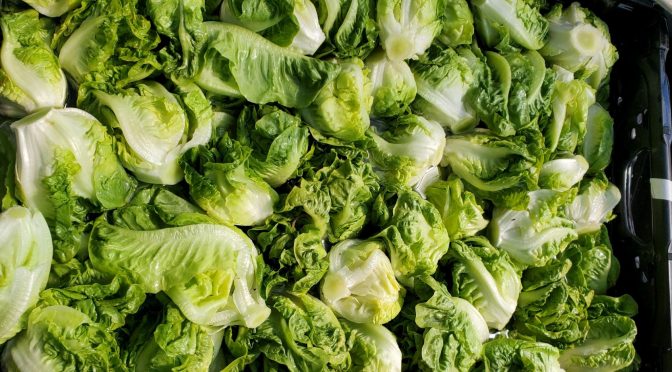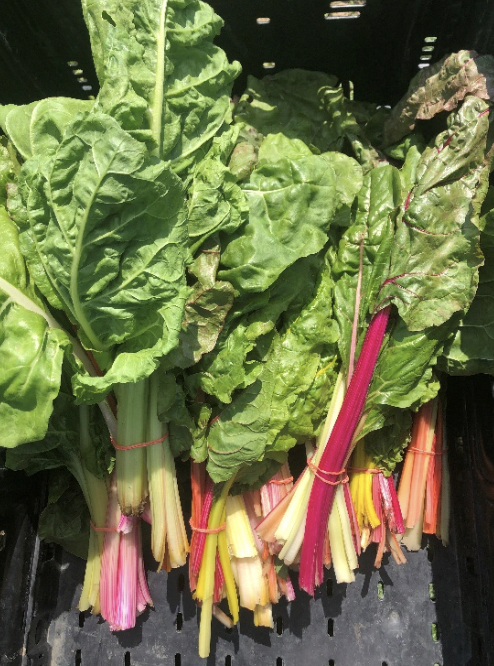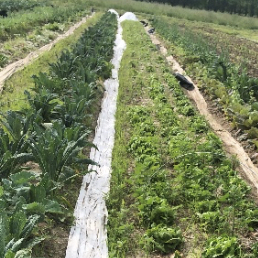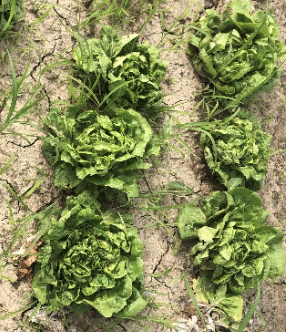Cook Field Pick-Up, Thursday, June 4, 3:30-6:00pm
Produce this week…
The simple pleasure of a bag of fresh produce each week that still smells like the earth and comes with the prospect of shared meals is a wonder. This week, especially, it embodies all the promises of a community that cares about and supports diversity in all its forms. As a CSA subscriber, you are part of a community that connects people to each other and to the place you inhabit. Our CSA includes over 100 subscribers. Beyond the community of subscribers, we also have community members who have donated CSA shares to the Talawanda Oxford Food Pantry (TOPSS); added to these shares the IF farm donates almost 50 lbs of produce each week to TOPSS. We also have interns on the farm who are learning about healthy soil, healthy plants, and healthy food; and volunteers helping farm staff. I hope, as you enjoy a meal this week made with produce from your share, you will think about the living, breathing life of soil, plants, food, and people, and all the interconnections between them.
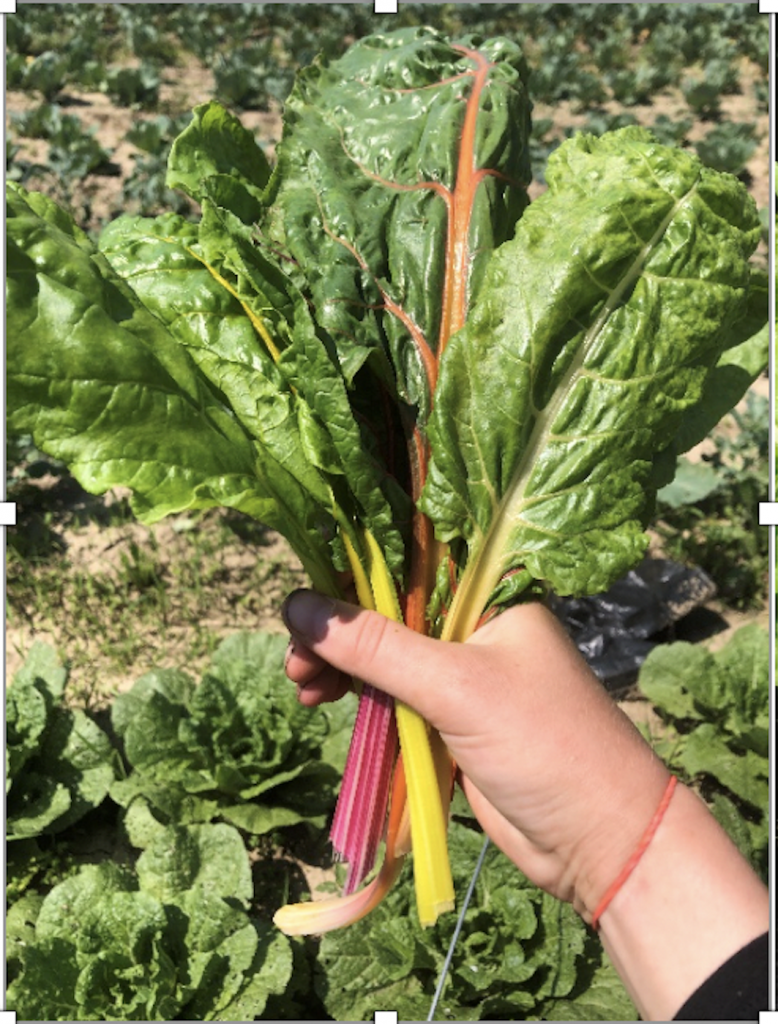
- Carleton
- Chard (double share)
- Chinese cabbage
- Kale
- Lettuce (Butterhead)
- Parsley plant
Tentative produce list for 6/11…
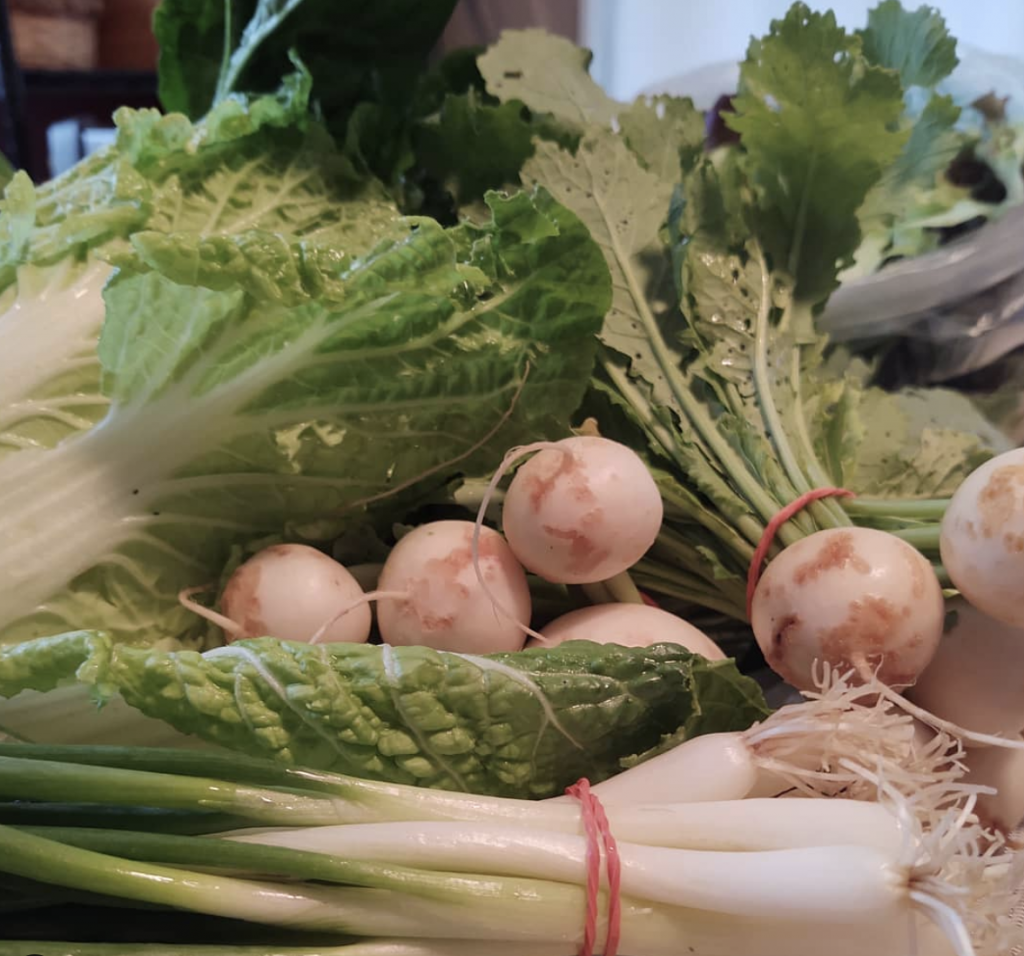
- Green onions
- Kale/Chard
- Kohlrabi
- Leaf lettuce
- Turnips
Farm Updates…
Carleton is an Asian green that flowers in the late spring and so it is seen a signifier of progression from spring to summer. You can eat the flowers on the Carleton in celebration of this seasonal transition. Also, be aware that Chinese cabbage has been soaked in salt water this week to remove the slugs. You might still find some hanging on. This is a good thing; lots of slugs are an indicator of living, healthy soils. Right now on the farm we are flush with greens. As we move into summer and dryer weather at the end of the month, you should expect a decrease in the number of items in your share. Once the summer plantings catch up, things will increase again.
What to do with your produce this week by interns Hannah Brown (Carleton) and Caroline Kerr (Butterhead lettuce and Swiss Chard)

What is Carlton? Also known as Komatsuna or Japanese mustard spinach, this leafy green vegetable is a fast-growing plant typically grown in Japan and Taiwan. “Komatsuna” is a Japanese phrase for “greens of Kamtsu”, a village near Tokyo where this plant was cultivated during the Edo Period (1603-1868). It is a drought and cold tolerant plant that matures in about 40 days, so it can be grown year-round. While it might appear to be an unfamiliar vegetable for some, it is a member of the Brassica family. This is the same plant species that produces turnips, bok choy, and Napa cabbage (which was featured on the blog recently!). Since it is a member of this family, it is not technically a spinach as its nickname might indicate. It can be used in a variety of ways including pickled, stir-fried with soy sauce, added to soups, or even eaten raw in salads. Its flavor is described as sweet, with a mild hint of mustard. Nutritionally, it is a great source of vitamin C, vitamin A, and calcium. 1 cup (chopped) will also provide about 4.2 grams of fiber. We encourage you all to try this out!
Here are some links to recipes that showcase this wonderful plant!
Stir Fry: https://www.oishi-washoku-recipes.com/komatsuna-and-scrambled-egg-stir-fry
This is an extremely simple side dish that only takes a few minutes to make! Not only are you going to get the nutrient benefits of the carlton plant, but also the eggs. Eggs are a rich source of protein, selenium, riboflavin, vitamin B12, fat-soluble vitamins (A, D, E, K), folate, and omega-3 fatty acids (if pasteurized).
Green smoothie: https://cookpad.com/us/recipes/243824-green-ginger-smoothie?via=search&search_term=komatsuna
Another very simple, but different way to eat this veggie! Apple and banana will provide added benefits of fiber, vitamin C, and potassium. While ginger does not provide a lot in the way of vitamins and minerals, it has anti-inflammatory properties and adds a slight spicy flavor to this smoothie.
Butterhead lettuce is nutrient rich and high in vitamin A. Vitamin A helps maintain healthy eyes, skin, teeth, and bones. It also helps keep the immune system strong.
Some recipes with Butter Leaf Lettuce
- https://www.saltandlavender.com/butter-leaf-lettuce-salad-lemon-dill-dressing/
- https://www.cityline.tv/recipe/dinner/smoked-salmon-butter-leaf-lettuce-salad/
- https://fortheloveofcooking.net/2012/04/avocado-and-butter-leaf-salad-with-a-tangy-mustard-garlic-vinaigrette.html
- https://www.foodnetwork.com/recipes/ree-drummond/thai-lettuce-wraps-2695881
Swiss Chard is packed full of nutrients. It is a great source of vitamin K, vitamin A, vitamin C, magnesium, potassium, iron, and dietary fiber. These micronutrients are important for disease prevention. Vitamins are important for energy production and immune function, and minerals are important for growth and bone health.
Some recipes with Swiss Chard


